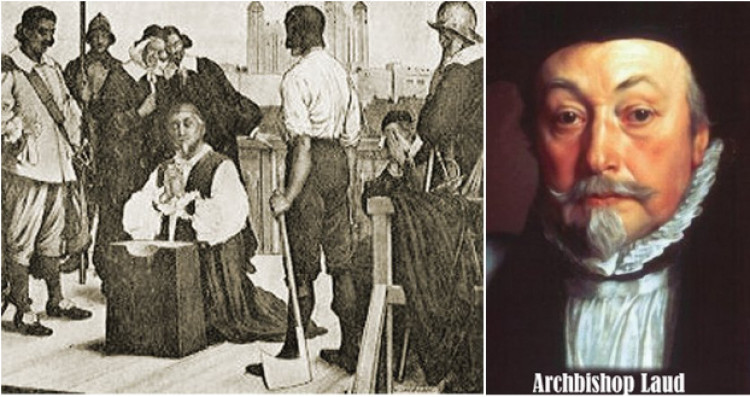From borough church to the execution block on Tower Hill - the controversial life of William Laud
By Susan Yates - Nub News contributor 19th Feb 2023
By Susan Yates - Nub News contributor 19th Feb 2023

IN the latest of her occasional features on history, Susan Yates – chairman of Thurrock Historical Society – recalls the story of a man with Thurrock connections who became the highest cleric in the Church of England.
__________
WILLIAM Laud was the one time rector of St. James Church, West Tilbury.
He was born on 7 October 1573 in Reading, the only son of William Laud, a clothier, and Lucy Webbe, widow of John Robinson, another clothier of the town, and sister of Sir William Webbe, Lord Mayor of London.
He was educated at Reading School then on 17th October 1589 he went to St. John's College, Oxford. He graduated in 1594 gaining his master's degree in 1598 and became a Doctor of Divinity in 1608.
Laud was a great admirer of Lancelot Andrewes (See Susan's feature on him via this link) and some say he was his spiritual guide. Laud became rector of St James Church, West Tilbury on 28th October 1609 until he resigned in November 1616 on being made Dean of Gloucester.
He was what we now might call High Church. He became unpopular when he removed the communion table from the centre of the Cathedral and had it placed in the Chancel and ordered people to bow to it on entry. This enraged the Puritans. Laud's views on religion had already got him into trouble and this was no different.

On 18th November 1621 he was made Bishop of St. David's. In 1626 he was made Bishop of Bath and Wells. This was in the same year that Lancelot Andrewes died leaving the Bishopric of Winchester vacant, so he was unable to apply for it, much to his annoyance. However, the King did give him the Deanery of the Chapel Royal and promised him Canterbury.
Laud's views on church practice were very unpopular amongst the church hierarchy and the masses and continued to get him in to trouble. In 1628 the Duke of Buckingham, a supporter of Laud, was assassinated at Portsmouth which left Laud distraught.
In 1629 he was made Bishop of London. Laud exerted his authority forcing the Puritans to migrate to America. In 1633 seven hundred refugees left England for a new life in America. Laud did not like this as they would be outside of his reach so in October 1633 he ordered that you could only have Anglican Chaplains on merchant company vessels.
In the following year he forbade emigration without his permission.
In 1633 William Laud was created Archbishop of Canterbury and once again he moved the Communion Table to the East End of the church and insisted it was railed in.
Opposition came from churches at Grays, Aveley, South Ockendon, Corringham, Fobbing, Horndon and Laindon. By 1639 Laud's political influence was fading, his views on religion were thought to be too close to Rome. By the end of 1639 it had almost gone completely.
Laud had promoted Strafford and when he was impeached for treason he must have known the end was near. Like Strafford Laud was accused of trying to subvert the fundamental laws of the Kingdom this resulted in his imprisonment in the Tower. In his prayers he begged "Oh let the sorrowful sighing of the prisoners come before thee and according to the greatness of thy power preserve thou them that are appointed to die".
So it was that on 10th January 1645 William Laud Primate of England was led to the infamous block on Tower Hill
In the words of Ralph Josselyn of Earls Colne "The Archbishop yet grand enemy of the power of Godlyness, that great stickler for all outwards pompe in the service of God, left his head at Tower Hill, London by Ordnance of Parliament".
As one drives by St James Church today it is hard to believe the history this Norman church could tell. Built around the end of the 12th century, certainly before 1202 it was the centre of village life until 1979 when it became redundant. It is now a private dwelling and who knows, perhaps the ghost of William Laud hovers in the pulpit?
CHECK OUT OUR Jobs Section HERE!
thurrock vacancies updated hourly!
Click here to see more: thurrock jobs
Share:














